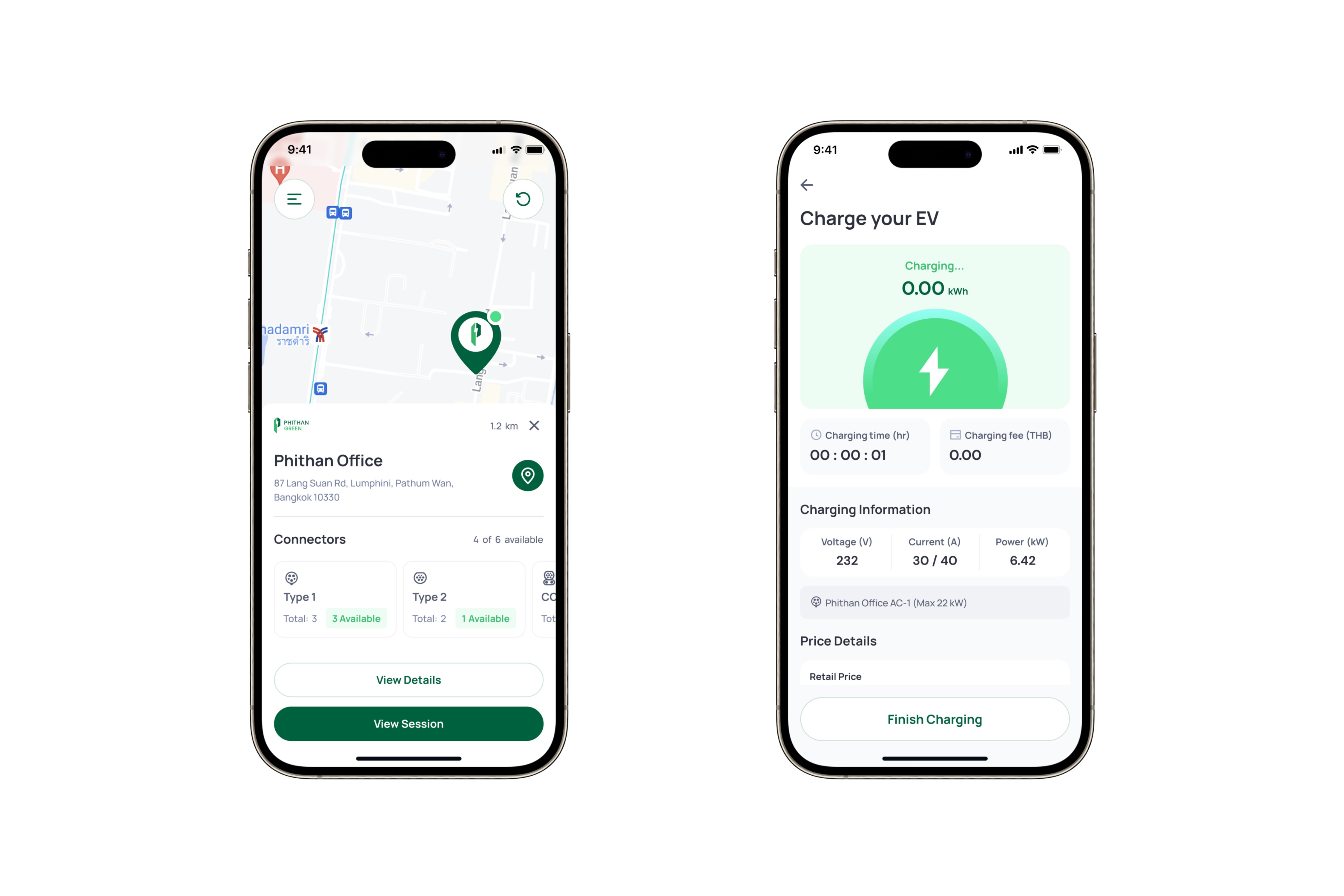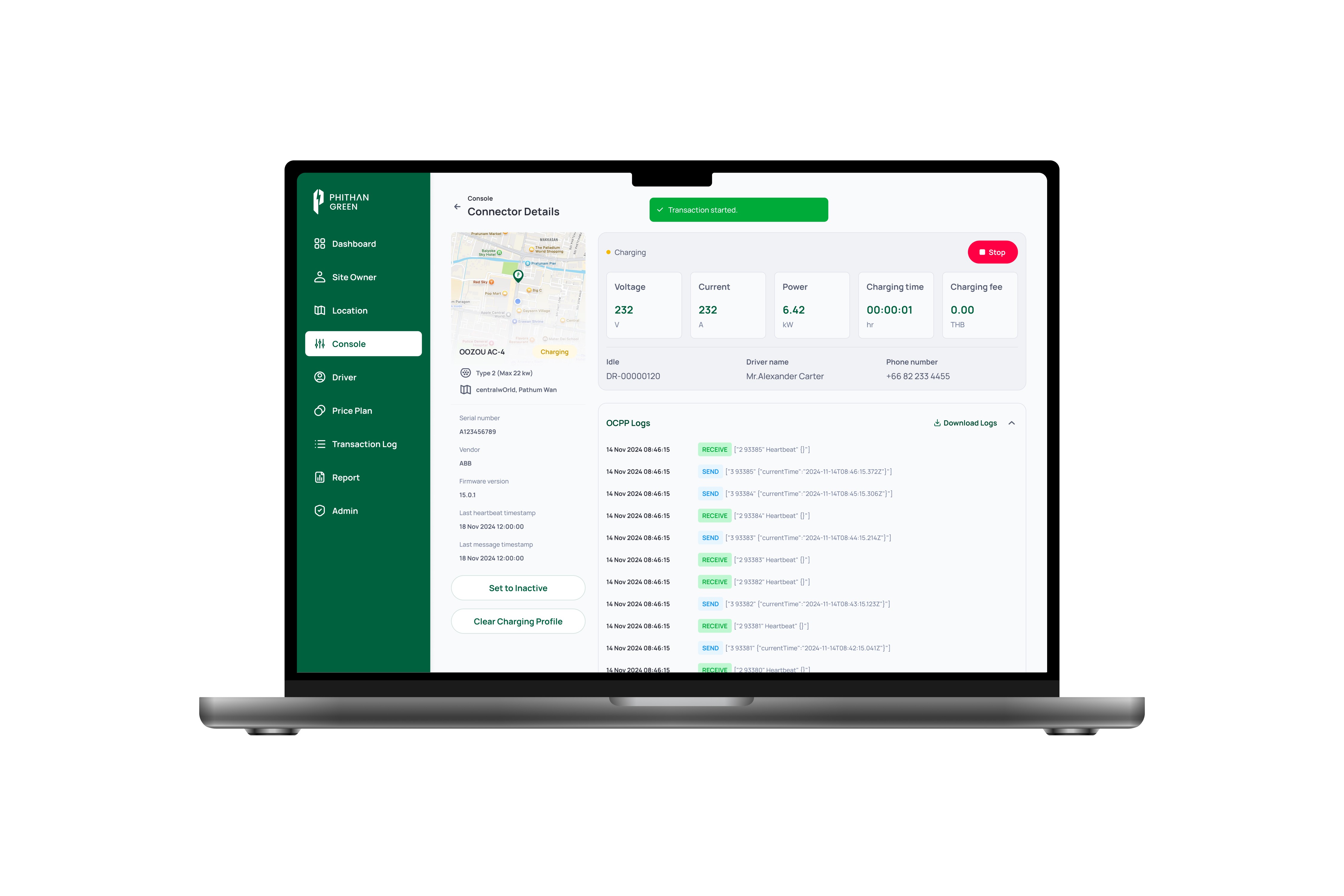Plux
Work
Case Study
UX Design
UI Design
Type
Mobile Application, Website Platform
Client
Phithan Green Co., Ltd.
Year
2023–2024
Designers
Panot Riankamol
Pornchai Paenkhumyat
Jatetanat Chairatanatrai
Mookmanee Kongchanasombut
Overview
Electric vehicles (EVs) are gaining significant popularity due to their clean and sustainable energy advantages. To meet the growing demand, EV charging stations have become essential for users in urban areas and those traveling across provinces. Plux is a user-centric application designed to simplify the EV charging experience, seamlessly integrating key functionalities
Background
Plux is preparing to launch EV charging stations across Thailand and leverage its expertise in the industry to introduce a new application and data management system. This platform aims to enhance efficiency for both users and administrators, focusing on delivering an exceptional user experience to capture market share in the growing electric vehicle sector.
Goals
To provide a unique user experience that sets it apart from other solutions in the market, particularly in terms of the charging process at stations, ensuring maximum convenience for users on the go. For the back-end administrators, the system must enable quick support for users encountering issues and facilitate easy management of data, ensuring seamless operations.
Researches
The research involved testing the actual charging experience at stations, focusing on both physical and app-based aspects. This created a user journey with multiple touchpoints occurring within the same flow, making it more complex. It was essential to consider the process both before and after plugging in to charge—how the application should respond and what the flow should look like. Additionally, a competitive analysis of both Thai and international markets was conducted to identify strengths and weaknesses that could be leveraged for improvement.
App Designs
The app's design prioritizes usability, ensuring a seamless experience for users, especially those on the move. The interface is intentionally straightforward, allowing users to quickly locate and select a charging station with minimal effort. Once a station is chosen, users can initiate charging through a clear call-to-action button, streamlining the interaction process.
The app further enhances user engagement by providing real-time updates on charging status, current flow, and other key metrics directly within the interface. With an intuitive UI layout and a focus on task-oriented UX design, the application supports effortless navigation and functionality, catering to the fast-paced needs of EV users. This thoughtful design ensures a frictionless and efficient charging experience.
Back-office Design
In addition to the application, a robust CMS (Content Management System) will be implemented to ensure smooth and efficient operations. The CMS is designed with a focus on backend usability and streamlined workflows, enabling administrators to manage critical data such as charging station locations, charging details, and real-time issue resolution for users encountering charger-related problems.
The system allows administrators to remotely monitor and troubleshoot by accessing detailed logs and analytics in real-time, ensuring timely responses to user concerns. Through an intuitive dashboard interface and well-organized information architecture, the CMS empowers admins to efficiently oversee the application’s operations, ensuring a seamless user experience while maintaining system reliability and performance.
Reflects
The development of this project faced challenges related to managing touchpoints between both the charger and the application, ensuring smooth interaction flow. Additionally, there was a need for a real-time system to address on-site troubleshooting, considering that users are often on the go and in a hurry. The goal was to minimize errors and ensure users could charge quickly, ultimately helping them reach their destinations on time and without any issues post-charging.



